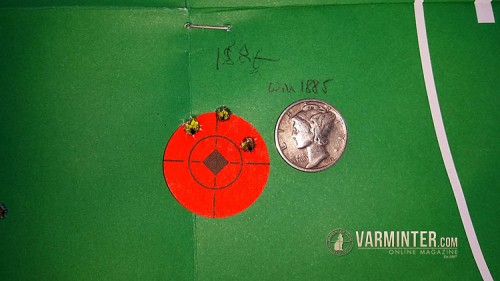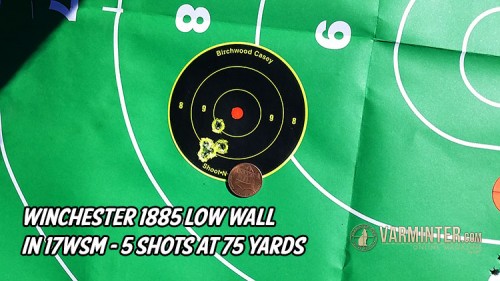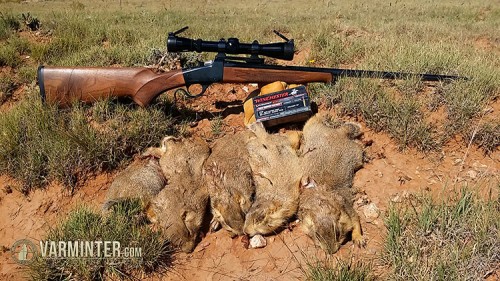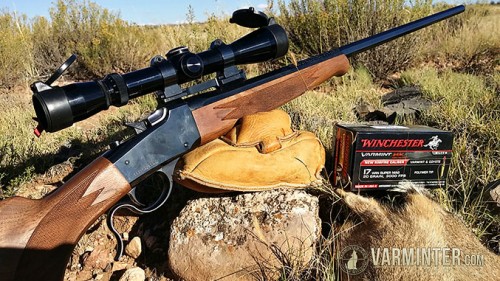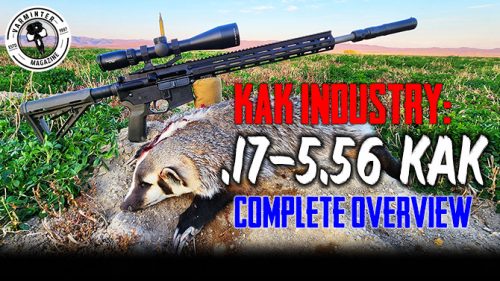With the advent of inexpensive rifles, with synthetic stocks, in calibers that rarely stray from the mainstream, the single-shot Winchester 1885 Low Wall is a unique little rifle. At the 2015 SHOT Show, we were given the opportunity to get our hands on, and do a review of the Winchester 1885 rifle in 17WSM. As most of you are aware, we cannot do a review of a firearm, without including a hunt report, so we timed it to coincide with a prairie dog hunting trip over in Arizona. After a little bit of range time, and a lot of shots out in the field, we finally have the information available about this rifle.
Rifle Specifications:
Winchester 1885 Low Wall Hunter Rimfire
Action: Single-shot – Falling-Block
Caliber: .17WSM (.17 Winchester Super Magnum)
Weight: 7lbs.-8oz.
Barrel Length: 24″
Overall Length: 40″
Twist Rate: 1:9″
Barrel Contour: Octagon
Stock Finish: Satin
Wood: Grade I
Buttpad: Pachmayr
Range Report:
After receiving the rifle, I cleaned it, mounted a compact 3-9 power Leupold scope, and headed to the desert for some shooting, and sighting-in. Because I was preparing for a varmint hunt, I did all my shooting 20 grain ammunition offering. After the break-in period (50 rounds), I began shooting for groups. At 100 yards, my initial 3-shot groups were in the 1.30″ range, with the tightest group being 1.25″, and the largest being 1.36″. I shot a total of 300 rounds on day one, and I had zero issues with the function of the rifle.
After arriving in Arizona a few weeks later, I sighted in again at a range where I could only shoot to 75 yards. I shot a couple of groups, then set-up some spent brass I found on the top of the target stand. It was no problem picking them off (see video for the shots) with the 1885 rifle, so I knew that I would have no problem killing prairie dogs.
—–
Click Below for the Video & Hunt Report:
Hunt Report:
Most of the shooting we do while prairie dog hunting is done from stationary benches. I didn’t want to do that with the 1885. Instead, I used it during some short hikes I took away from the main dirt roads, where I was able to shoot prairie dogs that were tucked away in small valleys in the area. It was the perfect rifle for this type of hunting. Carrying it was a breeze and shooting off-hand, or off a shooting stick, meant the demise of a lot of prairie dogs. Most of the shots were within 100 yards, but my shot-to-kill ratio was high. Because I was alone on most of these hikes, I was not able to get any video of the shots.
That would all change at the end of the week, where I planned to shoot a small valley that was loaded with prairie dogs. I discovered this valley while hiking around, and I found a dirt road running right through the middle. It was a perfect spot to set-up with the camera, and take out some of the prairie dogs on video!
On the last day, Tom (my cameraman) and I headed to the spot and set-up for the morning hunt. It was a perfect plan, and prairie dogs started to pop-up all over the place! We had the camera set-up to record video in every direction, and I was able to move around with the 1885 rifle, taking shots where I could, out to 150 yards. Once again, the rifle performed flawlessly, and was accurate enough to make most of the shots. There were a few shots that I missed, where I only had a head peaking up over the edge of a mound. These were shots that I’ve made before, so I knew the larger groups I experienced during my original sight-in were now coming into play. However, I simply adjusted my shooting to accommodate the accuracy issue, and made sure the remainder of my shots were at full-body targets.
After an hour of shooting, I had one round left on my person, and decided to take a 140 yard shot on a prairie dog that was bobbing up and down in the grass. Of course, with one round left, I missed the shot! It was my fault, but after the shot I called out to Tom to toss me another round. He threw me the round, and I caught it, ejected the spent shell, and loaded up the last round. The prairie dog had not moved after the first shot, so the camera was still recording what was going to happen. Once again, I lined up the shot and squeezed the trigger. This time, I held properly, and the 20 grain VMax hit hard, dropping the prairie dog right there. The entire sequence of events happened in a matter of seconds, which shows how quickly you can unload, and load, the falling-block action of the Winchester 1885 Low Wall (this is on the video).
Final Thoughts:
The Winchester 1885 Low Wall Hunter Rimfire rifle runs around $1400.00 MSRP. The reason behind the higher price is evident in the workmanship of the rifle. The one loaned to me by Winchester had beautiful wood, and everything was cut, and fit, nicely. The checkering was very nice and detailed, and the brushed metal of the receiver had no blems.
At the range, the 1885 did not perform as well as I hoped. The groups at 100 yards were not as tight as I would have liked to see from a high-end rifle of this quality. The caveat is, I was using a 3-9 powered scope, so that could have affected the groups. Also, I typically strip a rifle down when I receive it, then put it back together (following the proper torque recommendations, etc). I did not do that on this rifle, because I did not feel comfortable pulling it apart. I don’t know if that would have made a difference, but it did leave that variable open, which I don’t typically like.
Otherwise, the rifle itself is a blast to shoot, and accurate enough to drop ground squirrel to prairie dog sized varmints out to 150 to 175 yards consistently. If you are not used to falling-block actions, they are not hard to work. The 1885’s action is very smooth, and ejects the spent shell nicely, so you don’t have to worry about fishing it from the action to load the next round. Lastly, the rifle itself handles and shoulders well, with the sight picture being dead on when using standard scope rings. Because of my imminent move to Idaho, I did not choose to purchase this rifle from the Winchester folks. However, because of a pleasant history with a handful of Ruger No. 1 rifles, the 1885 was familiar, and grew on me. It became the go-to rifle when I wanted to get away from the vehicles, and roads, to chase down some varmints. The history of Arizona, and the old west, went hand-in-hand with the little 1885. I felt like the rifle was in its element, and shooting it there culminated a fun, and productive hunt.
- Podcast with Soul Seekers Nation From the 2025 SHOT Show - February 17, 2025
- Complete Overview of the .17-5.56 KAK Cartridge by KAK Industry - July 21, 2024
- AGM Global Announces New and Upgraded Optics at the 2024 SHOT Show - February 1, 2024


